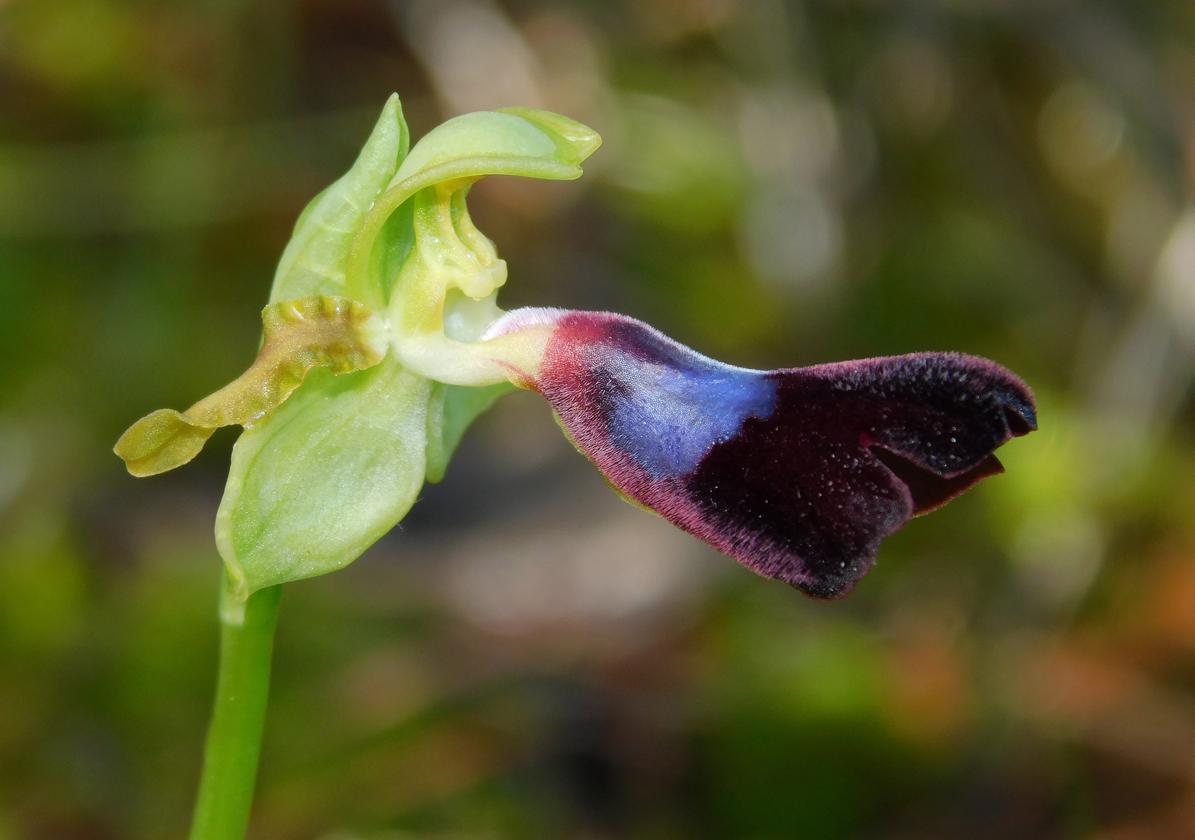

Sections
Highlight

It is one of the jewels in the crown of Malaga province's plant life despite not being as well-known as the Spanish fir (pinsapo) or some other plant species. However, Ophris atlantica attracts many orchid enthusiasts every spring. Among them are those who travel around different regions and even countries with a spotter's list so they can note down which of these unique plants they have seen with their own eyes.
"In the next few days, members of an Italian association will be coming to see it", explained Manuel Becerra, an expert on the subject and author of a substantial collection of books on these plants, together with his wife, Estrella Robles. The latest book - Orquídeas Silvestres de la Provincia de Málaga - came out just a few days ago and was presented at the Jornadas Andaluzas de Orquideoflora, one of the most important events for this area of botany in Spain.
This particular orchid has been chosen for the cover of this new essential guide that shows the diverse range of these plants in Malaga province. "It is the orchid with the largest labellum [the central, larger flower petal where bees land to feed and pollinate] in Europe", explained Becerra.
Like other orchids, this one tries to trick insects into pollinating it. In this particular case, the plant has a labellum that resembles the dark blue abdomen of bumblebees, so that they land on them in preference to other surrounding plant species. In particular, this part of the flower has a metallic, shiny hue to it and is shaped like a saddle, making it easy to identify for those in the know or for anyone with a guidebook such as that written by Becerra and Robles.
This orchid, which can also be found in Morocco and Algeria, is relatively plentiful across Malaga. In fact, the province is home to 90% of all orchid varieties found in Europe. However, it is a species that is not always easy to find, as it is typically located in mainly limestone areas, among wild thyme and rosemary or close to pine trees. Although Malaga can be considered privileged to have this plant here, this species is currently flagged as 'vulnerable' in the Andalusian List of Wild Species in Regime of Special Protection and in the Andalusian Catalogue of Species Under Threat.
The orchid is not exclusive to the province and can be found in other parts of Andalucía such as certain areas of Granada, Almeria and Cadiz, but orchid enthusiasts are more likely to find them in Malaga.
It is just one of the many possible orchids that can be seen in the province, especially in spring. Among the spring varieties is the Ophrys alpujata (yellow bee orchid), which is exclusive to Malaga. In fact, it is only known to grow in the area around Monda and El Juanar (Ojén). This orchid has been listed since 2019.
Another much-sought-after orchid is the Ophrys quarterae, endemic to the south of the peninsula with confirmed sightings and samples from both Malaga province and Portugal although, as Manuel Becerra notes, Malaga has better clusters.
To this list can also be added ophrys vernixia (mirror orchid), protected in Andalucía and with one of the largest clusters in the world in Archidona, the Malaga town that has done plenty in recent years to promote scientific studies of this type of plant, which has helped to increase the popularity of these plants across Europe.
For the seventh year running Jornadas Andaluzas de Orquideoflora, the annual event organised by Savia (a company of specialists in plant health) with support from Archidona town hall, was held in the town. Over four days (4-7 April) participants were able to attend talks, presentations and exhibitions, interspersed with more practical activities, including outings to different parts of Malaga and Granada provinces to view different types of orchids. The sites chosen for 2024 were Archidona itself, Sierra de las Nieves and Alhama de Granada.
At the same time, attendees were given the chance to photograph some specimens to take part in the hotly-contested annual photo competition to conclude the event that, for just a few days, turns Archidona into the epicentre of this wave of passion for orchids.
Publicidad
Publicidad
Publicidad
Publicidad
Esta funcionalidad es exclusiva para registrados.
Reporta un error en esta noticia

Debido a un error no hemos podido dar de alta tu suscripción.
Por favor, ponte en contacto con Atención al Cliente.

¡Bienvenido a SURINENGLISH!

Tu suscripción con Google se ha realizado correctamente, pero ya tenías otra suscripción activa en SURINENGLISH.
Déjanos tus datos y nos pondremos en contacto contigo para analizar tu caso

¡Tu suscripción con Google se ha realizado correctamente!
La compra se ha asociado al siguiente email
Comentar es una ventaja exclusiva para registrados
¿Ya eres registrado?
Inicia sesiónNecesitas ser suscriptor para poder votar.